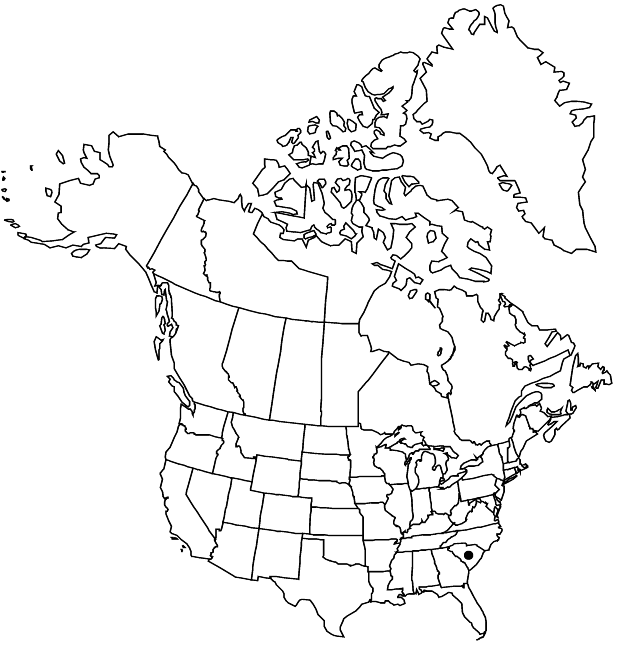Difference between revisions of "Rhododendron eastmanii"
Novon 9: 377, figs. 1, 2. 1999 ,.
imported>Volume Importer |
imported>Volume Importer |
||
| Line 46: | Line 46: | ||
|publication year= | |publication year= | ||
|special status= | |special status= | ||
| − | |source xml=https:// | + | |source xml=https://bitbucket.org/aafc-mbb/fna-data-curation/src/2e0870ddd59836b60bcf96646a41e87ea5a5943a/coarse_grained_fna_xml/V8/V8_923.xml |
|subfamily=Ericaceae subfam. Ericoideae | |subfamily=Ericaceae subfam. Ericoideae | ||
|genus=Rhododendron | |genus=Rhododendron | ||
Latest revision as of 22:47, 5 November 2020
Shrubs or trees, to 5 m, not rhizomatous. Stems: bark smooth to vertically furrowed, shredding; twigs unicellular and multicellular eglandular-hairy and unicellular-hairy. Leaves deciduous; petiole densely unicellular-hairy and sparsely to densely multicellular eglandular-hairy; blade ovate or obovate to elliptic, 4.3–7.1 × 1.8–2.9 cm, membranous, margins entire, plane, ciliate, multicellular eglandular-hairy, apex acute to obtuse, mucronate, surfaces sparsely scattered, multicellular eglandular-hairy, abaxial surface moderately to densely unicellular-hairy and multicellular eglandular-hairy, midvein densely unicellular-hairy and multicellular eglandular-hairy, secondary veins sometimes multicellular eglandular-hairy, adaxial surface sparsely to densely unicellular-hairy, midvein densely unicellular-hairy. Floral bud scales glabrous abaxially, margins unicellular-ciliate near apex, glandular along proximal 2/3. Inflorescences 5–9 flowered; bracts similar to bud scales. Pedicels 5–11 mm, densely unicellular-hairy and sparsely to densely multicellular eglandular-hairy, sometimes multicellular glandular-hairy. Flowers opening after leaves have expanded, erect to horizontal, strongly fragrant (fresh during mid day); calyx lobes 0.5–1 mm (often varying in length on same flower), margins setose, multicellular eglandular-hairy, abaxial surface sparsely to densely unicellular-hairy and multicellular eglandular-hairy, sometimes sparsely multicellular, weakly glandular-hairy; corolla white, lobes pink tinged on newly opened flowers, with yellow to orange blotch on upper lobe (style white), funnelform, 24–50 mm, outer surface densely unicellular-hairy and sparsely to densely multicellular stipitate-glandular-hairy (glands usually weakly developed), inner surface densely unicellular-hairy, petals connate, upper lobe 9–17 mm, lateral lobes 11–25 mm, tube gradually expanding into lobes, 13–25 mm (equaling or much longer than lobes); stamens 5, exserted, ± unequal, 45–67 mm. Capsules borne on erect pedicels, 12–19 × 4–8 mm, sparsely to densely unicellular-hairy and multicellular eglandular-hairy. Seeds without distinct tails, flattened portion of testa well developed at each end; testa expanded, dorsiventrally flattened, ± loose.
Phenology: Flowering late spring–early summer.
Habitat: Forests on north-facing slopes near limestone
Elevation: 30-200 m
Discussion
Older collections of Rhododendron eastmanii were typically referred to R. alabamense, which flowers early in the spring before the leaves have expanded, and has inflorescence bud scales are unicellular-ciliate; in R. eastmanii the bud scale margins are glandular.
Selected References
None.
